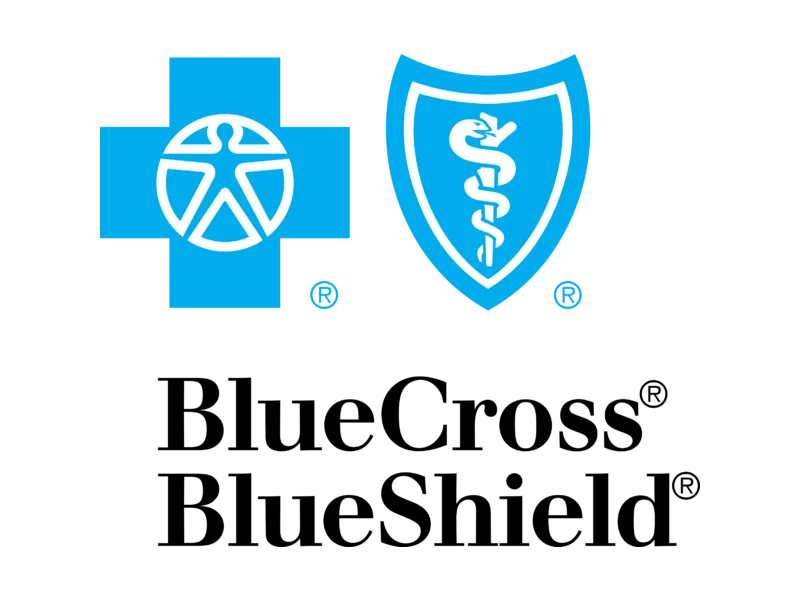Key Points
- High blood sugar or hyperglycemia can lead to a host of serious health issues.
- Whether it's prediabetes or diabetes, you can lower high blood sugar naturally.
- Controlling blood sugar levels can be difficult to manage alone.
- A personalized nutrition plan and regular exercise can help you stay on track.
If you are worried about high blood sugar, you may already know that lifestyle changes could help. However, you may also want to learn how to make changes that have a lasting effect.
Here, you'll learn what causes high blood sugar and discover science-backed tips to manage and reduce your blood sugar levels.
What causes high blood sugar (hyperglycemia)?
Our bodies convert carbohydrates to sugar. When the amount of sugar in our blood rises, the pancreas releases insulin, a hormone that acts like an air traffic controller, to guide the blood glucose into cells for energy.
However, issues with insulin can lead to high blood glucose levels. These issues include:
- Where the body does not make enough insulin (type 1 diabetes).
- Where the body makes enough insulin but doesn't work as it should (insulin resistance).
- The 'dawn phenomenon,' a spike in blood glucose in the early morning.
How does insulin resistance increase blood sugar levels?
If you have insulin resistance, your blood glucose levels may increase if you:
- Eat a higher quantity of carbohydrates (particularly starchy and highly-processed carbs)
- Live a sedentary life
- Do not get enough sleep
- Have inflammation from an illness or are sick with the cold or flu
- Experience chronic stress
- Drink too much alcohol
- Smoke tobacco (yes, even vaping).
What's the fastest way to lower blood sugar (with medication)?
The fastest way to lower blood sugar levels is to use fast-acting or rapid-acting insulin. Please consult your healthcare provider before you begin taking insulin.
Science-backed ways to lower blood sugar naturally
1. Move after each meal
Your muscles are the largest organ in your body by mass. They absorb 80% of the glucose from your bloodstream after you eat. The amount of glucose absorbed is related to the intensity and duration of your exercise.
So, here are some ways to burn sugar after a meal:
- Light walking: Try walking for 20-30 minutes after a meal. If you can't, studies show that even 2-5 minutes of light walking after a meal counts.
- Calf raises: Calf raises while sitting in your chair can also help. To do this exercise, keep your toes on the floor and lift and lower your heels. It's great for office workers who sit at desks or in meetings around meals.
- Find a private spot: If you can find a private spot for 5 minutes after a meal, try chair squats and standing leg raises. These exercises and calf raises can help lower your blood sugar.
- Fidget: Stand up and move around every 30 minutes, tap your foot (without the noise), or pace around using voice-to-text software to write your emails or plan your to-do list.
2. Exercise to burn sugar
There are two ways in which exercise helps you lower blood glucose:
- Active muscles can absorb blood sugar for energy, even if insulin is not present.
- Physical activity reduces insulin resistance, helping control blood sugar levels during and after exercise.
Research shows that the effects of exercise can last 24 hours or more (depending on the intensity and duration).
How does moderate exercise help you lower blood sugar?
The good news? No need for marathons. The CDC recommends just 150 minutes of moderate exercise a week—that's about 20 minutes a day.
Moderate-intensity exercises that help lower high blood sugar are:
- Walking briskly (when you can talk but not sing while walking)
- Water aerobics
- Cycling on flat ground.
3. Balance your meals
Registered Dietitian Rita Faycurry, RD, states, "Our bodies prefer carbohydrates for energy. Eating enough carbs saves our muscles from breaking down and provides fiber, which helps digestion and nourishes gut bacteria. Balanced meals are key to lowering high blood sugar."
Here are some ways to eat balanced meals:
- Use the diabetes plate method: The American Diabetes Association (ADA) suggests half your plate should be whole vegetables, a quarter lean protein, and the rest healthy fats and whole grains. The Academy of Nutrition and Dietetics (AND) agrees with this approach.
- Eat protein at every meal: If you are in a social gathering and cannot control the menu, try eating your carbs together with proteins (10-35% of your daily calories).
- Get dietary fiber: If the menu is heavy on refined or starchy carbs, consider a fiber supplement like psyllium husk before the meal. Introduce fiber gradually and consult a dietitian or doctor before starting fiber supplements.
- Eat foods that lower blood sugar: Incorporate a mix of whole vegetables and fruit, whole grains, lean proteins, and healthy fats in your diet. Here’s a list of dietitian-approved foods that burn sugar in your body.
4. Fight sugar cravings
If you face intense sugar cravings after a meal, it could be due to many reasons, including:
- Biological: After you eat, your glucose levels might drop as insulin works to process your meal. Your insulin spike may be higher if your portions are too large or your meal is filled with refined and starchy carbs, leading to sugar or carb cravings.
- Emotional: Over time, you might have developed a habit of eating dessert after meals to soothe anxiety or stress, procrastinate a tedious task or meeting, or even reward yourself for being "good" during the day. Whatever the reason, consider writing down what the sugar does for you, and you may be able to stop food cravings.
Faycurry, RD, adds, "Some experts say that sugar can be as addictive as nicotine or cocaine. So, if you cannot quit or lower your sugar or carbohydrate intake on your own, do not lose hope. There may be many psychological, biological, emotional, and social reasons behind your cravings. The right diabetes diet can help."
Consider getting expert help. Fay can help you find a Registered Dietitian near you, covered by your insurance.
5. Hydrate
Increasing your water intake is an easy way to start lowering your blood glucose. Drinking more water when you have hyperglycemia (high blood glucose) will help your kidneys flush excess sugar through urine.
6. Get regular sleep
Studies link diabetes with irregular sleep. Not getting enough shut-eye can increase your risk of obesity, which in turn makes you more likely to develop type 2 diabetes.
Try to get 7 hours of sleep a night. Stabilizing your blood glucose levels can help you sleep better.
7. Other lifestyle changes to reduce blood sugar levels
- Quit smoking: Consider quitting tobacco. Studies show that smoking can increase your risk of diabetes by 30-40%. The nicotine in cigarettes can make you more insulin-resistant and may lead to hyperglycemia.
- Avoid or limit alcohol intake: Chronic, heavy alcohol intake increases insulin resistance.
- Address the dawn phenomenon: The dawn phenomenon is when people with insulin resistance experience a blood sugar spike at around 3 am (or any time between 4-8 am). Here are the ADA's tips on managing high blood glucose in the morning. You will have to start by measuring your blood glucose during the day, either with a common blood glucose monitor or continuous glucose monitoring (CGM).
Want to lower high blood sugar fast? A Registered Dietitian could help you lose weight and reverse diabetes or prediabetes. Fay can connect you to a Registered Dietitian near you, covered by your insurance.
Here are more frequently asked questions (FAQs) about high blood sugar.
What is prediabetes?
Prediabetes is when your blood sugar levels are higher than normal but not high enough to be type 2 diabetes yet.
The A1C range for prediabetes is typically between 5.7% and 6.4%. The A1C test measures your average blood glucose levels over the past two to three months.
Is prediabetes serious?
If you're in the prediabetes zone, some damage to your blood vessels and internal organs might have already started. This is why taking action now is so important.
Lifestyle changes can help reverse prediabetes, reduce blood sugar spikes, and prevent diabetes.
What is diabetes?
Diabetes is a chronic condition related to insulin, the hormone that regulates our blood glucose.
- Type 1 diabetes is an autoimmune condition where the body does not produce enough insulin.
- Type 2 diabetes is caused due to insulin resistance, where the body does not respond to insulin as it should.
If your A1C level is 6.5% or higher, that generally means you have diabetes. The test is a snapshot of your average blood sugar levels over the last couple of months.
Is diabetes serious?
High blood sugar or diabetes puts you at risk for heart disease, stroke, kidney damage, vision problems, foot damage, circulatory issues, and autoimmune disorders, among other health issues.
In fact, people with diabetes are 2-4 times more likely to have heart disease and twice as likely to have a stroke compared to those who do not have diabetes.
Can a dietitian help with your diabetes?
A Registered Dietitian can tailor a diabetes diet just for you, considering your health, food preferences, and nutrient needs. It's a personalized plan to fit your lifestyle.
Fay can help you find a Registered Dietitian Nutritionist near you, covered by insurance.
The views expressed by authors and contributors of such content are not endorsed or approved by Fay and are intended for informational purposes only. The content is reviewed by Fay only to confirm educational value and audience interest. You are encouraged to discuss any questions that you may have about your health with a healthcare provider.
Sources
Fay Nutrition has strict sourcing guidelines and relies on peer-reviewed studies, academic research institutions, and medical associations. We avoid using tertiary references.
- Role of Skeletal Muscle in Insulin Resistance and Glucose Uptake (July 8, 2020)
doi: 10.1002/cphy.c190029 - The Acute Effects of Interrupting Prolonged Sitting Time in Adults with Standing and Light-Intensity Walking on Biomarkers of Cardiometabolic Health in Adults: A Systematic Review and Meta-analysis (February 11, 2022)https://link.springer.com/article/10.1007/s40279-022-01649-4
- A Potent Physiological Method To Magnify and Sustain Soleus Oxidative Metabolism Improves Glucose and Lipid Regulation (August 5, 2022)
doi: 10.1016/j.isci.2022.104869 - Leg Fidgeting During Prolonged Sitting Improves Postprandial Glycemic Control in People With Obesity (July 2021)
doi: 10.1002/oby.23173 - Living with Diabetes: Get Active! (November 3, 2022)
https://www.cdc.gov/diabetes/managing/active.html - What is the Diabetes Plate Method? (February 2020)
https://www.diabetesfoodhub.org/articles/what-is-the-diabetes-plate-method.html - Diabetes and Sleep: A Complex Cause-and-Effect Relationship (August 31, 2010)
doi: https://doi.org/10.1016/j.diabres.2010.07.011 - The Health Consequences of Smoking-50 Years of Progress: A Report of the Surgeon General. Atlanta (GA) (2014)
https://aahb.org/Resources/Pictures/Meetings/2014-Charleston/PPT Presentations/Sunday Welcome/Abrams.AAHB.3.13.v1.o.pdf - Alcoholism and Diabetes Mellitus (April 17, 2012)
doi: 10.4093/dmj.2012.36.2.108 - High Morning Blood Glucose
https://diabetes.org/living-with-diabetes/high-morning-blood-glucose - Epidemiology of Diabetes and Diabetes-Related Complications (November 1, 2008)
doi: https://doi.org/10.2522/ptj.20080020










